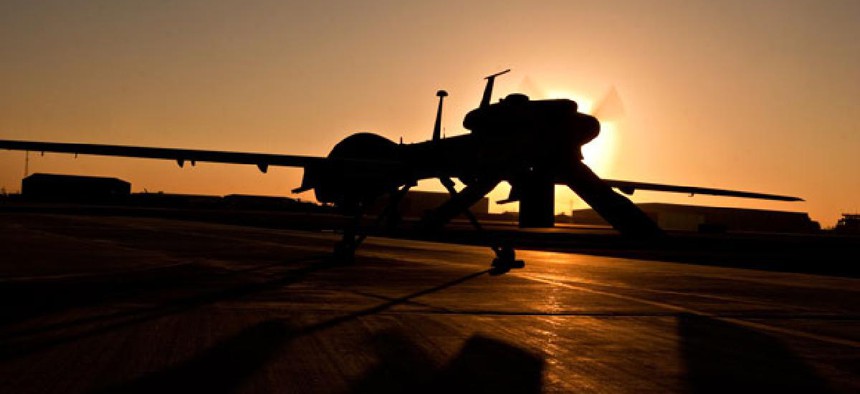If You’re a Soldier, Your Next Telecom Carrier Could be a Drone

United States Army
Mini base stations aboard unmanned aircraft may soon provide troops with smartphone reception.
The Army is considering turning drones into roving hotspots, Pentagon officials said. Essentially, a remotely-piloted aircraft would provide cellular coverage in bad reception areas, such as pockets of Afghanistan.
With the release of a military mobile device strategy in June, Pentagon Chief Information Officer Teri Takai directed information technology managers to support smartphone connectivity in almost every military domain. But when commercial networks have dead zones or are controlled by adversaries, it can be difficult to fulfill such a directive.
So, some military services might use drones for targeted telecommunications, rather than just targeted killings.
"When you hear the word drone, you think of it as something that is going to attack you and drop bombs -- we look at it as a platform that enables us to do something," said Mike McCarthy, head of the Army's smartphone project. "In this case, with a very small payload package of a picocell, we can put up and establish a secure wireless mesh over an organization where there is no commercial service available." Picocells are tiny cellular base stations.
"We've looked at that and how can we do that to strengthen and harden our network," McCarthy said during a Webcast presentation hosted by Nextgov on March 28. Drones could become part of an "aerial tier" of wireless infrastructure that supports connectivity, he explained.
The aerial tier concept involves "using everything from balloons to aircraft" to carry picocells, or "small lightweight things up in the air” that function as a relay to ensure there is reception, so “that you don't get the problem that you face in a lot of places, even here in this country, of dropped calls or dropped data packets because there's no service available," McCarthy said.



